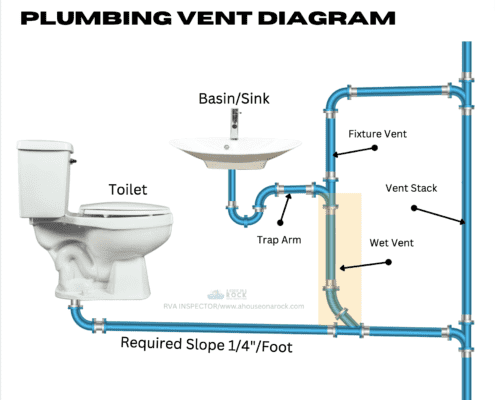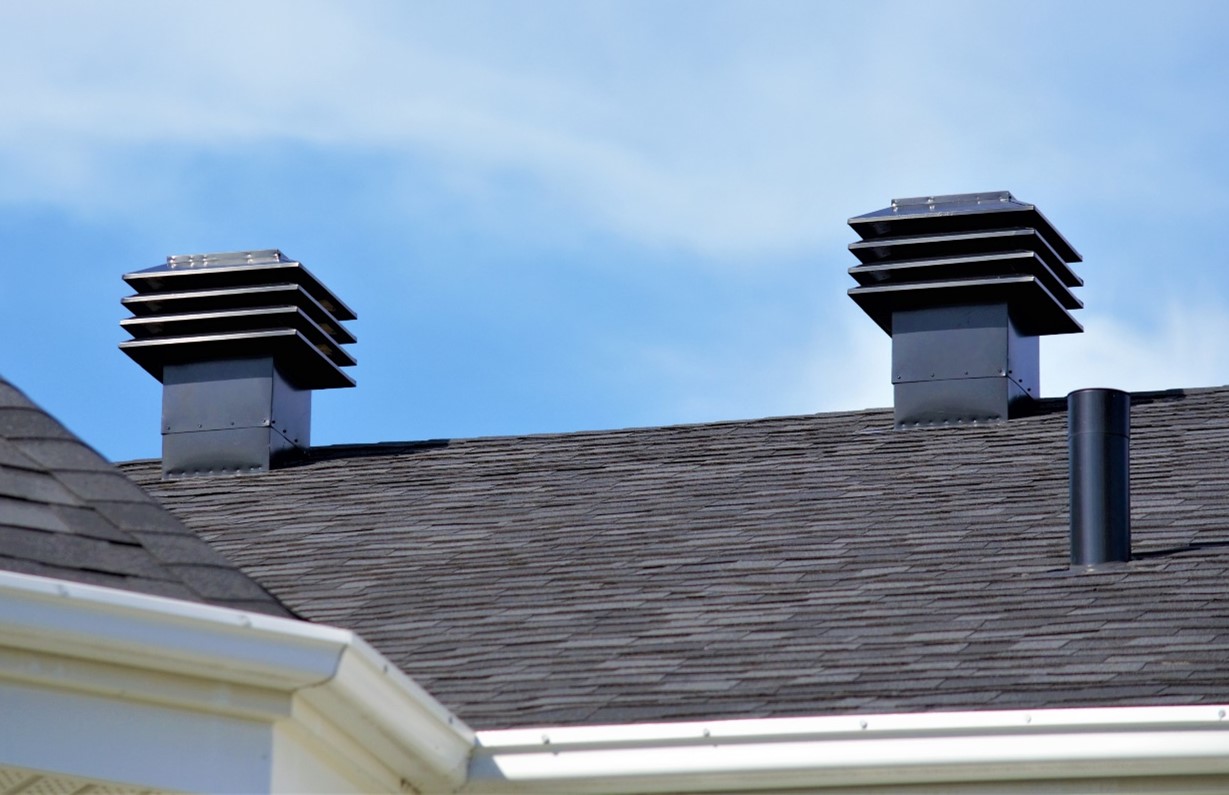The Significance of Adequate Ventilation in Your Home's Plumbing Systems
The Significance of Adequate Ventilation in Your Home's Plumbing Systems
Blog Article
What're your opinions regarding What Is a Plumbing Vent and Why Is It Important?

Appropriate air flow in plumbing systems is frequently neglected, yet it is crucial for preserving the functionality and security of your home's pipes. Ventilation helps manage air pressure, stop the build-up of hazardous gases, and ensure the reliable removal of waste. In this guide, we will certainly check out the importance of proper plumbing air flow, how it works, and the benefits it gives your plumbing system.
Comprehending Ventilation in Pipes
Ventilation in plumbing describes the network of pipes that permit air to move with the drainage system. These vents offer numerous objectives, including managing air pressure within the pipelines, avoiding sewage system gases from entering the home, and helping in the smooth circulation of wastewater.
Just How Ventilation Works in Pipes Systems
Air Pressure Policy
Correct ventilation keeps balanced air pressure within the pipes system. When water moves via pipes, it displaces air. Without ample air flow, this variation can produce adverse pressure, leading to slow down drains pipes or siphoning of water from traps, which can create unpleasant odors to leak right into the home.
Avoiding Sewage System Gas Accumulation
One of the most essential features of pipes vents is to avoid drain gases, such as methane and hydrogen sulfide, from accumulating within the home. These gases can present major health threats and are very flammable. Vent pipelines enable these gases to escape securely outside.
Assisting in Waste Elimination
Ventilation assists in the efficient elimination of wastewater by avoiding airlocks in the drainage system. When air can stream openly with the vents, it enables water and waste to flow smoothly with the pipes, reducing the threat of obstructions and back-ups.
Kinds Of Plumbing Vents
Main Heap Vent
The primary pile vent, additionally called the vent pile, is the key vent in a plumbing system. It extends from the major drainpipe align through the roof covering, permitting gases to run away and fresh air to enter the system.
Branch Vent
Branch vents connect to the main pile air vent and serve specific components, such as sinks, bathrooms, and showers. These vents make sure that each fixture has ample ventilation to operate effectively.
Air Admittance Valve (AAV).
An Air Admittance Valve (AAV) is a one-way valve that allows air to enter the pipes system without the need for a conventional vent pipe expanding through the roofing system. AAVs are typically utilized in restorations or areas where installing a typical vent is not practical.
Signs of Poor Air Flow in Plumbing.
Slow Draining Fixtures.
If your sinks, bathtubs, or toilets are draining slowly, maybe an indication of inadequate ventilation. Poor air flow can produce a vacuum impact, making it challenging for water to drain pipes correctly.
Gurgling Appears.
Gurgling noises originating from drains are often an outcome of air being drawn with water catches as a result of adverse pressure in the pipes. This is a clear sign of not enough air flow.
Undesirable Smells.
Sewer smells inside your home are a red flag that your pipes system is not properly ventilated. This could indicate that sewer gases are not being effectively aired vent outside, bring about potentially dangerous problems.
Common Air Flow Errors.
Inadequate Vent Sizing.
Making use of undersized vent pipelines can result in poor air flow and pressure discrepancies in the system. It's vital to utilize vents that fulfill the certain requirements of your plumbing system.
Improper Vent Positioning.
Positioning vents too much from the fixtures they offer can minimize their performance. Proper placement ensures that air can stream openly and effectively with the system.
Ignoring Code Demands.
Building codes give certain standards for pipes ventilation. Ignoring these codes can lead to a system that falls short to work properly and may lead to expensive fixings or health hazards.
Benefits of Appropriate Ventilation.
Improved System Performance.
Appropriately aerated pipes systems run extra efficiently, with fewer blockages, faster draining pipes, and much less strain on the pipes. This performance expands the life-span of the pipes system.
Improved Air Top Quality.
By stopping sewer gases from entering your home, correct air flow adds to better indoor air quality, making your living environment healthier and extra comfy.
Preventing Water Damage.
Sufficient air flow helps stop water from being siphoned out of catches, which can bring about drain gases entering the home and creating water damage with time.
Steps to Ensure Appropriate Air Flow.
Consulting Pipes Codes.
Always speak with regional plumbing codes when developing or changing your pipes system. These codes provide the essential guidelines for appropriate venting and guarantee your system satisfies safety standards.
Regular Assessment and Maintenance.
Normal examinations can help determine potential air flow concerns before they come to be major troubles. Upkeep tasks, such as cleansing vent pipes and looking for obstructions, are important for maintaining the system in good working order.
Specialist Installment.
For new installations or major alterations, it's smart to hire a professional plumber. They have the proficiency to guarantee the ventilation system is correctly developed and mounted according to code.
Conclusion.
Proper ventilation is a vital component of any kind of pipes system, making sure that it functions efficiently and securely. By understanding the relevance of air flow, acknowledging the indicators of poor air flow, and taking actions to maintain your system, you can protect against costly issues and safeguard your home's air quality.
4 Things You Should Know About Your Plumbing Vents
What Plumbing Vents Are
Also called a vent stack, a plumbing vent is a vertical pipe attached to your drain line that runs through your roof. The plumbing vent pipe, or plumbing air vent, removes gas and odors from your plumbing system and allows fresh air to enter the pipes, helping the water to flow out of the drain pipes.
What Plumbing Vents Do
Plumbing vents have two basic functions. One of which is to allow unpleasant smelling wastewater and sewer gasses to escape your plumbing system instead of entering your home. Plumbing vent pipes are typically located on roofs, away from windows, to ensure the fumes exit the home completely.
The other function of the plumbing vent is to move fresh air into your plumbing system. This helps move water through every plumbing fixture in your house, like toilets and sink drains. Think of the way in which you need to let a little air into the bottle as you pour soda in order to make the drink flow smoothly.
Different Types of Plumbing Vents
True vent: This is the most common vent option. In simplest terms, a true vent is a vertical pipe attached to your drain line that exits through the roof. They often function as the main vent that other fixtures can connect to. Re-vent pipe or auxiliary vent: Attached to the drain line near specific plumbing fixtures, re-vent pipes run up and over to connect to the main vent. Common vent: Two plumbing fixtures installed on opposite sides of a wall are typically tied into the vent stack using something known as a sanitary cross. Wet vent: This venting option operates as a drain pipe and a vent at the same time. Wet vent drainage systems drain water from one fixture while venting the air from another. Although they’ve been used for over 100 years, wet vent systems have only recently been added to the plumbing code in many areas. If you’re planning on installing one in a bathroom remodel, make sure you check your local code prior to construction. Loop vent: For free-standing fixtures like kitchen island sinks, loop vents are ideal. These vent pipes run under the floor, rise from the P-trap, and create a loop inside the cabinet sink. Air admittance valve: An AAV is a one-way mechanical valve typically installed at the site of the plumbing fixture. AAVs allow venting to occur without having to tie into a larger venting system. They’re ideal for venting fixtures where you aren’t able to easily connect to an existing vent system. Common Plumbing Vent Issues
Although vent pipes typically don’t have water flowing through them, they’re still subject to many typical plumbing issues. For example, clogs are one of the most common problems associated with sewer vent pipes. If your vent pipe gets clogged, all of your plumbing fixtures tied into the vent stack will be affected.
A sink with a slow drain that bubbles and gurgles or a strong sewage smell around your toilet are both indicators that your toilet vent pipe is clogged. Because most vent pipes exit through the roof, old leaves, twigs or even a bird’s nest could be clogging the pipe.
Clogs in your vent pipe system cause a buildup of negative pressure, meaning that water won’t be able to flow out of your home very well. It’s similar to putting your finger over the opening of a straw to trap water inside. When you remove your finger, the water is able to flow out of the straw.
If you suspect you have any blockage in your vent, make sure you have a professional come examine the situation. Left unchecked, a blocked air vent can lead to other costly repairs, like leaks and sediment buildup.
Under Pressure
Pipe vents are essential aspects of a home’s plumbing system. Owning a home means learning about all sorts of things you never put much thought into before. But by understanding as much as you can about the important systems of your home, you can keep those budgets intact and those anxiety levels low.
https://www.homeserve.com/en-us/blog/home-improvement/plumbing-vents/

Hopefully you liked our topic about The Upsides of Proper Ventilation in Plumbing Design. Thanks a lot for taking the time to browse our short article. Sharing is good. You just don't know, you may be doing someone a favor. I cherish your readership.
Top Article Report this page